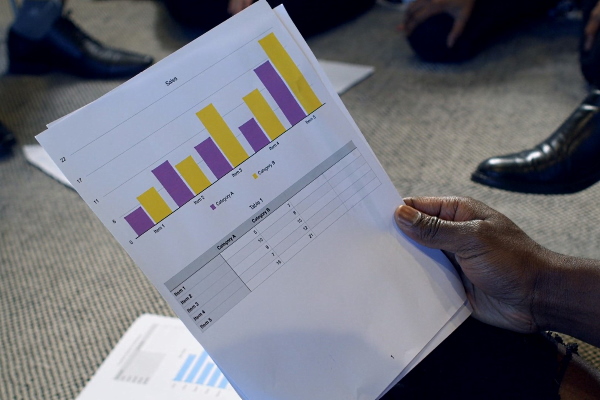To consider an application for financing, fill out the form and send it to us by e-mail along with the project brief, or contact our experts
At the planning stage, our clients must decide whether to use equity capital, finance a project with the help of business partners, shareholders, investors, or use loans from banks and other financial institutions.
One of the preferred options is the so-called syndicated loan.
Do you know how to use this financial instrument?
This article will answer the following questions:
• What conditions must be met by a company in order to receive a loan for large projects?
• What financial indicators are taken into account when using syndicated loan financing?
• What are the benefits of hiring a financial advisor when financing large projects?
• What are the main stages of obtaining a syndicated loan?
If you are planning to implement a large investment project, contact the company LBFL for advice.
Our team has extensive experience in financial modeling and project financing.
With the support of leading banks and financial institutions, we can help you finance the construction of a solar power plant, wind farms, waste recycling plant or other capital-intensive facility on the most favorable terms.
Syndicated loan and other types of external financing
According to the World Bank, financing large projects is a major challenge for fast growing economies.Today a business can choose the following sources of project financing:
• Leasing.
• Factoring.
• Issue of shares and bonds.
• Bank loans, etc.
All external financing instruments have different purposes and usually mean different costs for the companies that use them.
All of the above sources of project financing can be used in various combinations, based on the characteristics of a particular business.
Table: main sources of external financing of projects.
| Financial instruments | Short description |
| Factoring | This is an early redemption of all payable bills by the bank with which the company has signed an agreement, on mutually beneficial terms. This financial instrument is recommended for companies experiencing temporary problems with maintaining financial liquidity. |
| Leasing | This instrument refers to a leased item (machines, devices or vehicles). It is a way of financing the purchase of a certain object, but not a source of funds for the current activities of the company. The advantage of leasing is that it is much easier to access than a loan. But it is also usually a more expensive financing instrument. |
| Issue of bonds | This is one of the most interesting types of project financing. A bond issue can serve as the basis for long-term financing or as a way to reduce the cost of financing (for example, through short-term issues that replace revolving loans or overdrafts). Because of their universal nature, bonds are considered the most common way to finance large businesses after bank loans. |
| Bank loan | Loans can be provided by both banks and other institutions. Their disadvantages are usually short maturities and high interest rates. |
In the table above, we have not provided a comparison of the costs associated with certain types of financing, since such costs vary depending on the status of the company, the volume of financing, the duration of the financing and the current market situation.
Keep in mind that not every company can get a loan (syndicated or provided through one institution), also due to its poor financial health. In such a situation, it is necessary to look for alternative (even more expensive) sources of financing, and such a solution is often found in practice.
Despite the existing possibilities of obtaining funding from various sources, loans should be the basis of external financing for projects, and other sources should be considered as complementary.
Any major project requires a significant flow of funds, which must flow on a clear schedule to ensure the continuous operation of numerous contractors and subcontractors, manufacturers and equipment suppliers. Depending on the schedule, companies can use different sources of funds at certain stages of construction or operation of the facility.
Table: the most common classifications of loans.
| Classification | Types of loans and their description |
| Loan maturity |
|
| Business lending objectives |
|
| Loan repayment methods |
|
| Number of credit institutions and type of agreement |
|
A bank loan is a common form of external financing for large projects.
Due to the variety of forms of lending, this tool can be easily adapted to the individual needs of a particular company. It is also one of the cheapest sources of capital.
Thanks to close cooperation with leading commercial banks in Spain and some other European countries, LBFL can assist clients in obtaining a long-term syndicated loan on attractive terms.
Syndicated loan for project financing: key features
A syndicated loan is a long-term loan usually used to finance a specific project.

The main features of syndicated financing are listed below:
• Long term maturity: usually several years, but there are known examples with maturities up to several decades, especially in the oil and gas sector, energy and environmental projects.
• The loan is intended to finance specific activities, including the construction of a new thermal power plant or laying of a gas pipeline.
• The funds are partially provided in the form of a revolving loan up to a certain limit established by the agreement.
A syndicated loan is a highly customized financial instrument, which means there are no strict rules.
Loan agreements are very flexible and take into account the specifics of each company, its financial health and market position.
One of the features of a syndicated loan is its wide application in project financing. In these cases, the loan amount often exceeds the value of the assets of the entire enterprise, therefore banking institutions tend to apply very restrictive loan agreements.
Obtaining a loan exceeding the value of the company's assets within the framework of project financing is possible if several conditions are met:
• The industry in which the borrower operates is very stable and shows good development prospects (for example, the renewable energy sector).
• The borrower receives guarantees from partners or the contract includes other conditions for recapitalizing the company in the event of certain events.
• The syndicated loan is secured not only by all the assets of the given company, but also by the future cash flows of the project.
In addition, banks usually reserve the right to unblock subsequent loan tranches only when certain events occur.
For example, the allocation of the next part of funds becomes possible after the completion of a certain stage of construction.
Such agreements are usually concluded for significant amounts of financing, incomparably larger than in the case of traditional loans received from one bank. This is explained by the concentration ratios established by law per organization and the internal policy of banks regarding financing a specific sector.
In the case of a large loan, one bank may not be able to provide sufficient funds to implement the project on its own.
The first reason is that the bank runs the risk of violating the legislation, which in some countries imposes strict limits on the concentration of funds for one legal entity or even a sector.
On the other hand, each bank develops its own procedures (some of them even more stringent than national laws) that govern how much funds can be allocated to a particular enterprise or sector. For the combination of these reasons, banks are showing a willingness to organize syndicates in large projects.
An exception to the rule is financing provided in recent years by some Chinese banks, for which it is generally considered unusual to finance large investments by a single institution. Examples of this approach are financing telecom projects in Europe and financing large mining sector projects in Africa and South America. However, these decisions are often made in a centrally controlled economy and are usually aimed at bringing certain products to this market (usually projects are associated with Chinese manufacturers).
In the European context, the amounts of syndicated loans range from several tens of millions to several billion euros.
The largest syndicated loans in the EU are usually issued in the energy and infrastructure sectors, where the loan amount can exceed 1 billion euros.
Such large amounts require special conditions for the distribution of funds and control over their subsequent use. These conditions are determined long before the conclusion of the loan agreement itself and require special preparatory measures.
The role of a financial advisor in obtaining a syndicated loan
High-quality preparation and organization of project financing is the first and most significant step in this process.Company managers need to understand that preparation determines the subsequent success of the entire operation, and the better your company is adapted to the demands of the financial markets, the sooner and on better terms the process will be completed.
When your company first enters the syndicated finance markets with a major project, it is advisable to hire a financial advisor from the start. Such advisory functions are performed by renowned European and American banks such as Merryll Lynch, Goldman Sachs, JP Morgan, Citibank, Deutsche Bank, RBS, West LB and many other world famous brands.
In addition, you can hire a financial advisor from companies that are professionally engaged in such activities, such as Deloitte & Touche, Ernst & Young, PricewaterhouseCoopers, TDI Corporate Finance, etc. Of course, the cost of such services from market leaders can be very high.
LBFL is ready to provide businesses with a full range of advisory services, including financial modeling, selection of optimal funding sources and assistance in obtaining a syndicated loan on favorable terms.
The financial advisor is usually selected through a competition announced by the company.
His role is to guide the company through the entire financing process in an optimal way. However, this is often limited to optimization of the financing structure without legal advice.
The consultant's fee depends on the loan amount. For the largest loans of about 1 billion euros, this fee can amount to hundreds of thousands of euros. The advisor's excellent knowledge of the financial market (both domestic and international) will be an advantage for the borrowing company.
The role of a financial advisor in obtaining a syndicated loan:
• Conducting a detailed analysis of the financial market. Choosing the most appropriate moment to enter the market to obtain a loan on the best terms.
• Selection of alternative sources of financing for the project, which will supplement or replace the syndicated loan. Determination of the most suitable banks or financial institutions to manage funds. Providing a list of institutions interested in the project.
• Professional assistance in drawing up a business plan at the request of the bank. Execution of official documentation and negotiations with interested parties.
Only companies that have experience in syndicated financing or are part of an international group using such financing can enter the market without the assistance of a financial advisor.
Stages of obtaining a syndicated loan for a large project
Preparing documents and arranging syndicated financing usually takes more time than applying for a loan from one bank.A simple contract with standard market terms can take up to 3 months to prepare, while more complex options can take 6 months or more.
At this stage, a professional financial consultant helps to clearly divide the organizational process into several stages with deadlines for their implementation.
In general, the stages of obtaining a syndicated loan include:
• Hiring a financial advisor (optional).
• Selection of proposals, selection of the organizing bank for the consortium and signing of a mandate letter (a document authorizing this bank to organize a syndicate on agreed terms). In some cases, it is possible to sign an underwriting letter, a document guaranteeing a company to organize financing on agreed terms.
• Drawing up a project financing schedule, taking into account the specifics of a particular business, technical and other possibilities for the implementation of a particular project.
• Prepare a term sheet, a document that contains a funding request detailing the financial needs of the borrower.
• Preparation and signing of an information memorandum.
• A syndication process for arranging financing on specified terms.
• Selection and signing of an agreement with a law firm.
• Development of a loan agreement and approval of collateral.
• Obtaining the necessary official and legal approvals.
• Signing the agreement.
Below we describe the most important stages of syndicated financing.
Selection of a bank and signing of a mandate letter
This stage includes the filing of applications from banks wishing to act as the organizer of the consortium.When choosing a bank for this role, it is advisable to take into account not only the proposed financial conditions, but also the experience of carrying out similar operations.
It may turn out that an inexperienced financial institution will have problems meeting the schedule or even closing the deal. It is important to listen to the opinion of a financial advisor and ratings prepared by specialized magazines (Euromoney and International Financing Review).
If you have already identified a bank, simply sign the mandate letter that gives the selected financial institution exclusive rights to arrange financing.
This document includes the following basic financing conditions:
• Full cost of the loan.
• Commission for processing the unused portion of the loan.
• Funding schedule including syndication schedule.
• The main obligations of both the lenders and the borrowing company.
• Possible sanctions for breaches of contract, etc.
The mandate letter will also indicate when the organizer will be able to cease fulfilling its obligations or refuse further funding and what is the organizer's responsibility in this case.

Pay attention to the type of document that you sign with the bank.
In this sense, the so-called best effort and underwriting letter are usually distinguished. In the first case, best effort means that the organizer undertakes to make every effort and use his knowledge to attract funding on the terms specified in the memorandum, but does not give a guarantee.
It is safer for the company to sign the so-called underwriting letter, which is a written guarantee of the bank to finance the project on the terms specified in the term sheet. In case of failure to fulfill its obligations, the bank will incur some responsibility, which is why financial institutions are less willing to sign such documents. Again, a lot depends on your experience, business negotiation skills, and the qualifications of your company representatives.
Also, at the first stage, it is important to choose the right facility agent and security agent.
The facility agent is responsible for the dialogue between the borrower and all members of the syndicate, as well as for all information materials of the borrower (financial statements, forecasts, budgets, business plans and other reports and indicators that the borrower must provide in accordance with the loan agreement).
The security agent is the bank that will be responsible for all matters related to securing the syndicated loan.
The best solution for choosing a security agent is a local bank, because local specialists are more familiar with the local working conditions of some institutions (for example, courts) and can answer any questions from the consortium.
Preparing a term sheet
Term sheet is a document developed jointly with the bank, which specifies the requirements for a syndicated loan.This document specifies, among other things, the loan amount, the financing schedule, expected conditions and collateral.
This term sheet is usually prepared as an annex to the information memorandum.
Information memorandum
The information memorandum contains general information prepared for the banks-members of the consortium.A competent financial advisor understands what type of information is required and in what format it should be presented.
Banks are accustomed to receiving a complete set of information in a standard form, and deviation from the unwritten rules can diminish the credibility of the company applying for a loan, thereby limiting the range of interested organizations.
It is also advisable to coordinate the information memorandum with the lead bank of the consortium before presenting it to other financial institutions.
An information memorandum is usually divided into three main parts.
The first part of the document contains detailed information about the borrowing company. In the case of project financing, a detailed project description is also required. This document describes the business sector of this company, its history, expected growth trends, as well as directions of activities and opportunities of competitors.
Such a document usually contains an analysis of the market, its development potential, as well as the legal framework in which the company operates (concessions, permits, licenses). In addition, it also describes the political situation in the country if the consortium will include foreign institutions (political risk, corruption, direction of the country's development).
The memorandum also defines the structure of the company and the interests of its owners.
It describes the strengths and weaknesses of the company, emerging opportunities and threats to its activities, investment plans and development plans.
Often, a description of management personnel is also required, indicating experience.
When a company first enters the syndicated finance market, the entire document preparation process (especially the first and third parts) should be coordinated by a consultant or a law firm. Regardless of whether or not the memorandum creation process was coordinated by an external organization, the appendix to the information memorandum is usually the final report.
The second part of the memorandum is a detailed business plan that includes an accurate financial model. In addition to the balance sheet, income statement and cash flow statement, the financial model must identify all the variables that affect the revenues and costs of the project.
The financial model describes the long-term activities of the company, at least for the period for which funding is provided.
When building a financial model, it should be borne in mind that banks want to see the so-called worst-case version of the model, that is, a pessimistic version of the business plan (limiting the expected income, increasing costs, changing interest rates, exchange rates, inflation, and so on).
This forms the clearest picture of the company's stability and its sensitivity to potential changes.
Thus, the model should be easily adaptable or include several scenarios at once, which will allow the borrower to significantly save time in the future.
The specialists of LBFL are ready to develop a financial model for you and draw up all the necessary documentation for obtaining a syndicated loan.
The third part of the memorandum contains all the documents necessary for the functioning of the company.
It is a package of documentation that will enable law firms hired by the consortium leader to verify the legal basis of your business.
The preparation of this package will require numerous legal documents, including extracts from court registers, descriptions of important legal proceedings, descriptions of ownership (notary deeds), proof of ownership of assets, etc. It should include documents such as the company's articles of association, contracts with owners, contracts with major suppliers and consumers and general data about them.
The amount of information that should be contained in the information memorandum depends on the type and amount of the syndicated loan required for the implementation of your project.
With project finance, you may face the most restrictive approach. In the case of a syndicated loan based on corporate finance principles, banks may waive certain requirements.
It is important to hire a reliable auditing company that will verify all the information specified in the memorandum. These companies are usually recommended by banks, which arrange financing and act on their behalf, while borrowers, unfortunately, have to bear the costs of the work performed.
The cost of such services can be several tens of thousands of euros.
The borrower can minimize these costs through professional cooperation with the auditor and the provision of accurate information, which reduces audit time.
It is also necessary to involve the company's management in the process of drawing up an information memorandum. During its preparation, several meetings are held between the consultant, banks and the auditing company. They are aimed at familiarizing the parties with the project and confirming the information provided.
Management involvement is critical as top managers sign this document and take responsibility for the accuracy and completeness of the information presented in the information memorandum.
Syndication process
Syndication is a typical banking process and the role of the borrower is limited.It can boil down to clarifying any questions to the banks invited to the syndicate, or providing additional information not included in the memorandum.
The company may also propose other banks to the syndicate leader, which may be included in the syndicate later. The process of creating a bank syndicate should last no more than 1-2 months.
Choosing a law firm and preparing a contract
Simultaneously with the syndication process, our experts begin work on the development of credit documentation.Usually, this documentation is rather complicated and, depending on the loan collateral, may consist of several contracts.
An important issue here is the choice of a legal advisor. In the case of a local banking syndicate in your country, you can hire one legal advisor who is well versed in the specifics of local legislation.
If you are dealing with an international consortium, it is important to be prepared for an increase in legal costs. International consortia in Europe may insist that the documentation be subject to English law and the jurisdiction of English courts.
Therefore, the company will have to choose either two consultants (local and foreign law firm) or turn its attention to an international law firm with a representative office in the host country.
When choosing a law firm, it should be borne in mind that the role of lawyers does not end with the signing of a loan agreement. Experienced specialists will also be needed later in the period of servicing the loan agreement. You may need to draw up annexes to the contract or resolve other issues that require legal interpretation. No documentation is perfect and not all situations that may arise during the life cycle of an investment project can be predicted in advance.

It is advisable that the selected law firm can service your loan agreement for the foreseeable future.
This approach will lead to cost savings.
Methods of payment for legal services when preparing a loan agreement:
• Hourly legal fees based on the number of hours law firms spend preparing documentation. Most often, this scheme is insisted on by lawyers, but it is difficult because of cost control.
• Fixed fee agreed before starting work. This is the most customer-friendly method, but market practice tends towards hourly rates, mainly due to pressure from law firms.
The cost of legal services can vary.
For example, consultants from Eastern European countries offer their services for 100-200 euros per hour, while London law firms charge about 500 euros per hour.
Documentation for obtaining a syndicated loan is a package of several contracts. The main agreement governing all relations between lenders and the borrower is the Facility Agreement.
The Facility Agreement describes all relationships between the parties, including:
• Loan amount and loan maturity.
• Methods for calculating financial ratios.
• Methods for calculating the cost of servicing a loan.
• Liability in case of violation of the agreement, etc.
The second part of the documentation includes the Security Agrement.
Again, depending on the specifics of the loan or syndicate, different documents may be required. The main types of collateral can include bank accounts, assets, shares, assignments of rights under contracts and more.
The third and last part of the documentation is the so-called Intercreditor Agreement, which regulates relations between the members of the consortium itself. Here the rules for withdrawing from the syndicate and the resale of its part by the bank, the requirements for new member banks of the consortium, the rules for the distribution of capital contributions and interest paid by the borrower, and many others are prescribed. When agreeing on this part of the documentation, the participation of the borrower is optional.
The application of model contractual standards in the case of international consortia greatly facilitates preparatory work.
The most common standard is the British LMA (Loan Market Association) standard. Its use is acceptable for most banks in the world, which speeds up the process of approving loan documents. However, each loan agreement is a customized contract that must be tailored to the needs of a particular business.
Syndicated loan standard terms and conditions
Financing large projects through a syndicated loan requires the borrowing company to strictly comply with numerous requirements throughout the term of the agreement.This includes informational, financial, legal or other obligations stipulated by the relevant contract.
Particular attention should be paid to the events of default prescribed in the agreement, which can jeopardize the position of the lender or borrower. In general, in the case of obtaining a syndicated loan, the borrower has to provide a little more information than a regular loan.
Disclosure obligations are limited to standard reports such as quarterly and annual reports, often requiring audits. You may need to provide much more detailed reports. The amount of this information is usually agreed upon at the stage of signing the contract. In addition, the company provides its budget and long-term business plan.
In addition to standard reporting on project finance, banks may require permission to change a company's business profile, an obligation to apply for consent (waiver) in the event of a merger with another legal entity, the creation of subsidiaries, and many others.
Bank requirements depend on many factors, including the following:
• The size and position of the company in the market.
• The amount of the syndicated loan and its maturity.
• History of cooperation with agent bank.
The agent bank is the financial institution through which the company contacts the rest of the syndicate.
Thus, the bank acts as a coordinator between the borrower and the funding banks.
The agent charges a commission for this service. This commission is also negotiated before signing the loan agreement and usually does not exceed 100 thousand euros per year, which is quite a sufficient amount for a large syndicate.
Further responsibilities of the borrowing company should include maintaining certain financial ratios within specified limits.
The most common indicators in loan agreements include:
• Debt / EBITDA ratio. The lower the number, the better. The level considered safe is between 0 and 1, and the indicator above 2.5 is usually considered dangerous for the company. However, this scheme should not be considered final, because, as is the case with many other financial indicators, a lot depends on the industry.
• EBITDA / debt service. This figure should be high. An indicator below 1.5 is considered dangerous, and at a lower level, companies have problems servicing their current debt.
• Debt / equity. The lower the number, the better. It is used at the initial stage of implementation of large projects, when the company has not yet generated positive EBITDA. An indicator level above 2 is considered dangerous.
Important recommendations
The preferred financing base for large projects in the energy, environmental and infrastructure sectors is a long-term syndicated loan that best meets the needs of such projects.The syndicated loan provides stable financing at relatively low costs. Preparation in this case is extremely important, since the subsequent success of the entire operation often depends on professional planning and competent paperwork.
When using syndicated financing, companies should maintain certain ratios within specified limits. These actions are in the best interests of the business as it will minimize subsequent costs.
If you are looking for funding sources for a large project, contact LBFL consultants at any time.
We are ready to share our experience and assist in obtaining loans from leading European banks and financial institutions.




























